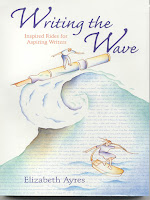By Terry Whalin @terrywhalin
The holidays are full of surprises and changes from the normal routine. Often we are with family that we rarely see or other people which take us out of the routine experiences. It's refreshing and good in many ways. Other times it brings challenges and even strange experiences.
I've had a few of those strange experiences during my holidays. There is no need to give you the specifics as I attempt to be diplomatic yet reach my point. When I have these different experiences, I'm committed to learning from them and growing through the strangeness until it is resolved in the best possible way.
If you write or want to get published (or have been publishing), I want to suggest several action steps with these experiences.
First, in your own private way, write down the incident, the feelings and the dialogue, Maybe you pick up an ink pen or pencil and put these words into a journal or open a file on your computer and type in the thoughts. I prefer the computer option since my handwriting had detoriated the point that people tell me they struggle to read my printing. Hey, I understand those comments because after the fact, I struggle to read my own handwriting. While the concepts are fresh you write the information. I've found time tends to blur the details of these experiences.
Next, look for places you can plug these incidents into your own writing life. For certain stories, you may have to changed the names or let family members read the stories and gain their permission before you publish anything (online or in print).
For some stories, I'd encourage you to go ahead and create the articles. Choose a potential publication or audience as you write so your completed article is an appropriate length in terms of word count and focus which means you lead the reader to a single point or message or takeaway. Then polish that story and write a query letter related to it. Some magazines will only look at a completed article if they have first seen the query letter and expressed interest. Other publications will read the completed article. It is your responsibility as the writer to research the publication and understand their needs and preferences.
Some of the most popular and widely-read articles that I've ever written in my years in publishing come from these personal experience stories. Many magazines prefer first person stories for certain sections of their magazine or maybe even a regular column. Again it is your responsibility as the writer to locate these opportunities.
Seasonal stories are always in vogue for magazines. As a magazine editor, I recall the challenge of finding enough stories connected to holidays like Thanksgiving or Christmas or Easter or Valentine's Day or Fourth of July. Immediately when they happen is the best time to write these stories. You have several months to polish them before sending them out to the appropriate publication.
If you don't want to use them in a magazine article, then save the stories and weave them into a nonfiction book project or totally disguise the details and use them in a fiction project. You can even use a single incident in a magazine article (or two), a nonfiction book then as the spark of an idea for a short story and finally as an incident in your novel. The possibilities are endless.
I hear many authors bemoaning the limitations for their writing. Instead be aware of the boundless possibilities--if you capture the stories and proactively use them in your writing.
Tweetable:





















